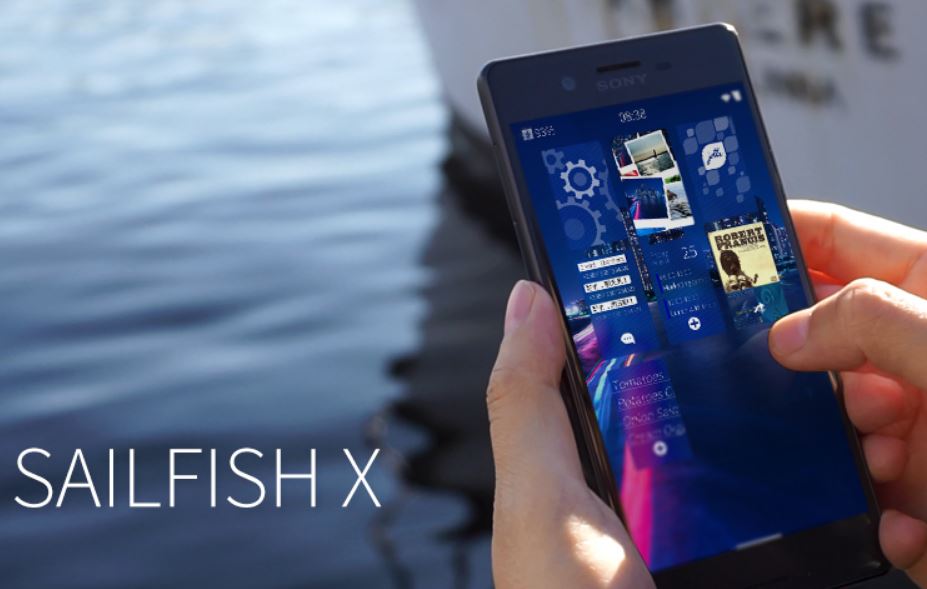A while ago, I wrote that SailfishOS, a unique alternative to the Android operating system, was being developed for the Sony Xperia’s Open Devices program. It has been worked specifically for the Sony Xperia X by Sailfish developer Jolla and released on October 4th 2017. Thus far, Sailfish has been released on a number of devices, mainly Jolla’s Jolla Phone 1, the limited edition Jolla-C Phone and the Intex Aqua Fish, a version of the Jolla-C developed by indian company Intex. There has been a number of other phones, including the kickstarted Turing Phone and has been fan-ported to a number of others.
While Jolla’s hardware business seem to be on the right track when it was released in back in 2013, the success didn’t continue and the company doesn’t seem to be interested in producing more hardware, which to led to their decision to produce Sailfish for the open devices program. And here we are. €49.90 later and you’ve got yourself SailfishX for the Sony Xperia X. So, how is it?
Well, firstly, you need to flash your Sony Xperia X with instructions provided by both Jolla and Sony. Now I admit I am not knowledgeable about flashing a smartphone; it’s something I have been interested in, but not something I’ve ever actually done before. The instructions were a little hard to follow, and not having any previous knowledge of flashing made the process a little difficult.

So, the OS, what’s it like? If you’ve ever used Sailfish, you’ll feel right at home. The home screen looks beautiful on the high resolution Xperia X, familiar icons and wallpapers all look fresh and newer than ever. The touch screen works really well with the OS; it’s accurate and smooth. The only issue I found was that swiping from the edge to get back to the home screen could be hit and miss at times.
Sailfish running on Jolla Phone 1 can display some delay while opening apps, moreso with AQndroid apps, but while there was a slight delay with SailfishX, I’d say that the apps that would take a few seconds to open on Jolla Phone were near instantaneous on the Xperia. The phone has significant grunt under the hood in comparison to Jolla Phone and Jolla-C, and it really shows.
Also, I find Sailfish to be a lot more streamlined than Android. After using both of them I find Android to be a little bloated and clunky, overloaded with features that have been added over time. Sailfish’s gesture based OS feels a lot smoother to me – the home screen is always a single swipe away, doesn’t contain any shortcuts, and details which apps are open at any one time. If you close an app on the home screen, it’s closed for good.

Sailfish apps run smoothly, and can be downloaded from the Sailfish Store. Android apps generally run well, but Sailfish uses an Android emulator to use them so they can be hit and miss: some work, some don’t. Some run badly, some need Google Play services, but often the apps that need Google Play will work nonetheless. The downside with Sailfish Apps from the store is that they’re largely created by community members and there are a number of great looking apps that haven’t been updated in awhile. All apps are free, but allow for you to donate.
One thing that works really well is an app called Warehouse, which allows you to download apps and patches from openrepos.net. Sailfish is very different to Android and I’ve found little bits and pieces that I didn’t like, but wasn’t able to change. However, it’s worth checking open repos, as often you’ll find a patch. For instance, the alarm clock on Sailfish only allows for a five minute snooze – personally, I like a ten minute snooze. It’s impossible to change as standard, but with an app I can choose how long I need to snooze for. Happy napping!
Ambiences is Sailfish’s version of profiles: it’s a nice feature, much like profiles of other smartphone OS’s. It allows you to change and personalise the wallpapers, ringtones and general colour of the operating system and font. While SailfishX is a fantastic expansion of the operating system, it isn’t all perfect.
One of the main things I ask for in a smartphone is a good camera. The Sony Xperia X has a fantastic camera, one of the best on the market I’d say. However, whereas the camera running on Android is sharp, high definition and high quality, the SailfishX version is miles off. Subdued colours, streaky photos and when zoomed in, blurring. The photos at best are passable, but the camera is capable of much better; expect this to change in updates.
I also had an issue with mobile data. If you put the sim card in while the phone is on, it takes a restart for it to recognise it, and when it does it doesn’t connect to mobile data. This seems to be an issue affecting a few people, but not all. Switching the data preference to 3G seems to work, but at the moment 4G is inoperable for me. Also I noticed an issue with the browser: once I hit enter to search, the browser would immediately close down. This would happen until I restarted but seems to happen randomly.
All in all, SailfishX feels a little early access. I’m glad to see Sailfish on a modern smartphone and will happily continue to support an alternative to the smartphone duopoly. I still feel Sailfish is a bit too finicky for a mainstream audience who would rather sacrifice security for ease of use. But it remains a great alternative to Android and I will gladly continue to support them.
Some of the coverage you find on Cultured Vultures contains affiliate links, which provide us with small commissions based on purchases made from visiting our site. We cover gaming news, movie reviews, wrestling and much more.



